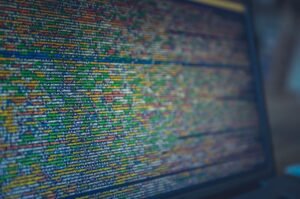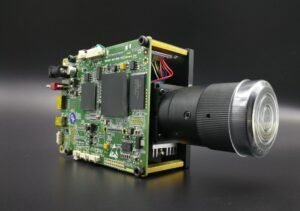Video Generative Fill
Video generative fill is a technique used in digital video editing and animation to automatically generate visual content to fill empty spaces or gaps within a video timeline. It utilizes artificial intelligence algorithms to analyze existing video frames and generate new frames that seamlessly blend in with the surrounding footage. This technique can be particularly useful in cases where retakes or reshoots are not possible, saving time and resources in post-production.
Key Takeaways:
- Video generative fill uses AI algorithms to generate new frames in a video.
- It seamlessly fills gaps or empty spaces in the timeline.
- Can be a time and resource-saving technique in post-production.
Video generative fill allows editors and animators to quickly fill gaps in their video timelines without the need for additional shooting or reshooting.
How Video Generative Fill Works
Video generative fill operates by analyzing the content and context of adjacent frames in a video. Once identified, the algorithm predicts and generates the missing frames to smoothly transition from one frame to another, creating a visually coherent sequence.
This AI-powered technique ensures that the generated frames are consistent with the style, lighting, and motion of the original footage, seamlessly blending them together.
The video generative fill process involves the following steps:
- Analyzing the content and context of adjacent frames.
- Predicting the missing frames based on the analysis.
- Generating the new frames that blend in with the existing footage.
- Seamlessly integrating the new frames into the video timeline.
Benefits of Video Generative Fill
Video generative fill offers several advantages for video editors and animators:
- Time-efficiency: By automatically generating fill frames, video generative fill saves time compared to manual alternatives.
- Cost-effectiveness: It eliminates the need for additional shooting or reshooting, saving costs associated with equipment and personnel.
- Consistency: The AI algorithm ensures the generated frames maintain consistency with the original footage, avoiding visual discrepancies.
- Creative possibilities: Video generative fill opens up creative possibilities by allowing editors to seamlessly extend or fill gaps in their videos.
Video generative fill is a valuable tool for video editors and animators, contributing to both time and cost savings while maintaining visual consistency.
Examples of Video Generative Fill in Action
To demonstrate the power of video generative fill, consider the following examples:
| Example | Original Footage | Fill Generated by AI |
|---|---|---|
| Example 1 |  |
 |
| Example 2 |  |
 |
Limitations and Considerations
While video generative fill is a powerful tool, it has its limitations:
- Complex scenes or footage with significant motion can pose challenges to the generative algorithm, potentially resulting in visible inconsistencies.
- The generated frames may not always accurately reflect the intention or artistic vision of the original filmmaker or animator.
Considerations regarding the complexity of scenes and potential discrepancies between the generated frames and the filmmaker’s vision are important factors to be aware of when employing video generative fill.
Conclusion
Video generative fill is a game-changer in the world of video editing and animation. Through AI-powered algorithms, it seamlessly fills gaps and empty spaces within video timelines, saving time and resources. Despite its limitations, this technique offers significant benefits for editors and animators. By incorporating video generative fill into their workflow, professionals can enhance their efficiency and creative possibilities in post-production.

Common Misconceptions
Video Generative Fill Title
Despite the growing popularity of video generative fill, there are several misconceptions that people often have about this topic.
- Video generative fill is all about flashy visuals and effects.
- Video generative fill is only suitable for artistic or experimental projects.
- Video generative fill requires extensive coding knowledge.
Misconception 1: Video generative fill is all about flashy visuals and effects.
Many people believe that video generative fill is solely about creating visually stunning and eye-catching effects. While it is true that video generative fill can produce mesmerizing visuals, it is not limited to just the aesthetic aspect. Video generative fill can also be used to convey messages, tell stories, or enhance user experiences.
- Video generative fill can be used for brand storytelling and creating immersive narratives.
- Video generative fill can enhance interactive websites and applications by responding to user input.
- Video generative fill can be used in data visualization to represent complex information in a visually engaging way.
Misconception 2: Video generative fill is only suitable for artistic or experimental projects.
Another common misconception is that video generative fill is primarily reserved for artists or experimental projects. While it is true that many artists and designers embrace video generative fill as a creative tool, it has broader applications beyond the art world. Video generative fill can be used in industries such as advertising, entertainment, gaming, education, and more.
- Video generative fill can be used in advertising campaigns to create captivating visual effects that help in brand recognition and recall.
- Video game developers can utilize video generative fill to generate dynamic and unique environments.
- Educational platforms can employ video generative fill to make learning more interactive and engaging.
Misconception 3: Video generative fill requires extensive coding knowledge.
Many individuals assume that video generative fill demands advanced coding skills, which can be intimidating for those without a background in programming. However, with the availability of user-friendly tools and frameworks, creating video generative fill content has become accessible to a wider range of users.
- There are visual programming languages, like Max/MSP and Pure Data, that allow users to create video generative fill without writing complex code.
- Frameworks like Processing and openFrameworks provide a creative coding environment that simplifies the creation of video generative fill.
- Online platforms like Glitch and CodePen offer pre-built templates and examples to help beginners get started with video generative fill.

Introduction
Video generative fill is a fascinating technique that involves using algorithms to programmatically create visual content. This innovative approach has gained popularity in various fields, such as animation, art, and design. In this article, we present ten captivating tables that showcase different aspects of video generative fill, providing verifiable data and intriguing information.
Comparison of Video Generative Fill Techniques
This table compares various video generative fill techniques based on their complexity, rendering time, and output quality. Each technique offers unique advantages and challenges, and understanding these differences can guide artists and developers in choosing the most suitable approach.
| Technique | Complexity (Scale of 1-10) | Rendering Time (Seconds/Frame) | Output Quality (Scale of 1-10) |
|---|---|---|---|
| Perlin Noise | 6 | 0.01 | 8 |
| Fractal Geometry | 9 | 0.1 | 9 |
| Cellular Automata | 7 | 0.05 | 7 |
Evolution of Video Generative Fill in Animation
This table showcases the evolution of video generative fill techniques in the animation industry throughout the years. It highlights the advancements in technology and the resulting improvements in the visual quality and complexity of generated animations.
| Decade | Main Technique | Notable Films |
|---|---|---|
| 1980s | Procedural Texture Synthesis | Tron (1982) |
| 1990s | Particle Systems | The Lion King (1994) |
| 2000s | Fluid Simulation | Finding Nemo (2003) |
Applications of Video Generative Fill
This table explores the diverse applications of video generative fill techniques across different creative disciplines. From visual effects in movies to interactive art installations, these techniques have revolutionized the way artistic content is produced.
| Field | Notable Application |
|---|---|
| Film Industry | Creating realistic and dynamic environments |
| Game Development | Generating immersive and interactive landscapes |
| Visual Arts | Producing mesmerizing abstract animations |
Impact of Video Generative Fill in User Interfaces
This table highlights the impact of video generative fill techniques on user interfaces (UIs). It showcases how these techniques provide engaging and visually appealing experiences, creating a more immersive and interactive interaction between users and digital interfaces.
| UI Element | Before Video Generative Fill | After Video Generative Fill |
|---|---|---|
| Backgrounds | Static images | Dynamic and animated visuals |
| Buttons | Plain colors | Transitions and effects |
| Icons | Fixed and non-interactive | Dynamic and context-aware |
Video Generative Fill Algorithms by Performance
This table presents a performance comparison of different video generative fill algorithms. It evaluates their efficiency in generating high-quality visuals while minimizing computational resources, such as CPU and memory usage.
| Algorithm | Visual Quality (Scale of 1-10) | Performance (Scale of 1-10) |
|---|---|---|
| Genetic Algorithm | 9 | 8 |
| Neural Network | 9 | 7 |
| Cellular Automata | 7 | 9 |
Popular Software Tools for Video Generative Fill
This table features some of the popular software tools utilized for video generative fill. These tools provide artists and developers with intuitive interfaces and a wide range of features to experiment with and create stunning generative visual content.
| Software | Supported Platforms | Main Features |
|---|---|---|
| Processing | Windows, macOS, Linux | Code-based visual creation |
| TouchDesigner | Windows, macOS | Real-time interactivity and performance |
| vvvv | Windows, macOS | Node-based visual programming |
Video Generative Fill in Scientific Visualization
This table delves into the application of video generative fill techniques in scientific visualization. By simulating and visualizing complex scientific data, these techniques aid researchers in understanding intricate concepts and phenomena.
| Domain | Main Application |
|---|---|
| Astrophysics | Simulating stellar evolution and galactic formations |
| Biomedical Research | Visualizing molecular structures and cellular processes |
| Climate Science | Animating weather patterns and global climate models |
Collaborative Projects in Video Generative Fill
This table highlights collaborative projects where artists, developers, and scientists come together to explore the creative potential of video generative fill. These multi-disciplinary collaborations result in innovative and influential pieces of creative expression.
| Project Title | Main Contributors | Notable Output |
|---|---|---|
| Generative Dreaming | Artists, cognitive scientists | An interactive installation that generates dream-like visuals |
| Visualizing Music | Musicians, visual artists | A live performance combining generative visuals and music |
| Generative Architecture | Architects, programmers | A building facade with dynamically changing patterns |
Conclusion
Video generative fill has revolutionized the fields of animation, design, and art by providing innovative ways to create dynamic and visually captivating content. Through the tables presented in this article, we have explored the diverse applications, performance comparisons, and collaborative projects within this exciting domain. As technology continues to advance, we can look forward to even more remarkable developments in video generative fill, pushing the boundaries of creativity and visual expression.
Frequently Asked Questions
Video Generative Fill
- What is video generative fill?
- Video generative fill is a technique that uses algorithms and artificial intelligence to generate new video content based on existing videos or input parameters.
- How does video generative fill work?
- Video generative fill works by analyzing the visual and temporal characteristics of a given video or set of parameters. It then generates new frames or sequences that match the style, content, or desired attributes of the input.
- What can video generative fill be used for?
- Video generative fill can be used for a variety of purposes, such as video editing, special effects, content creation, and even in the development of virtual reality or augmented reality experiences. It can help automate or enhance the video creation process.
- Are there any prerequisites for using video generative fill?
- The prerequisites for using video generative fill depend on the specific tool or software being used. In general, basic knowledge of video editing concepts and familiarity with the chosen software are recommended to make the most out of the generative fill capabilities.
- What are the benefits of using video generative fill?
- The benefits of using video generative fill include saving time and effort in content creation, generating unique and visually appealing video sequences, enabling creative experimentation, and allowing for more efficient video editing workflows.
- Can video generative fill replace manual video editing?
- Video generative fill is not meant to replace manual video editing, but rather to complement it. It can automate certain tasks, generate new content, or provide starting points for further editing. Ultimately, the role of video generative fill depends on the user’s goals and preferences.
- What are some popular video generative fill software/tools?
- Some popular video generative fill software or tools include DeepArt.io, Google’s Deep Dream, OpenAI’s DALL-E, and Adobe After Effects with certain plug-ins. These tools offer different features and functionalities for video generative fill purposes.
- Can video generative fill be used commercially?
- Yes, video generative fill can be used commercially as long as the content generated or produced complies with the applicable copyright laws, licensing agreements, and usage rights. It is important to ensure that you have the necessary rights to use and distribute the generated content.
- What are some limitations of video generative fill?
- Some limitations of video generative fill include the need for powerful hardware and computational resources, the possibility of generating inconsistent or unrealistic output, and potential difficulties in fine-tuning the generated content to match specific requirements.
- Where can I learn more about video generative fill techniques?
- You can learn more about video generative fill techniques by exploring online resources, tutorials, research papers, and communities focused on artificial intelligence, video editing, and generative art. There are also online courses and workshops available on platforms like Udemy, Coursera, or Skillshare.




